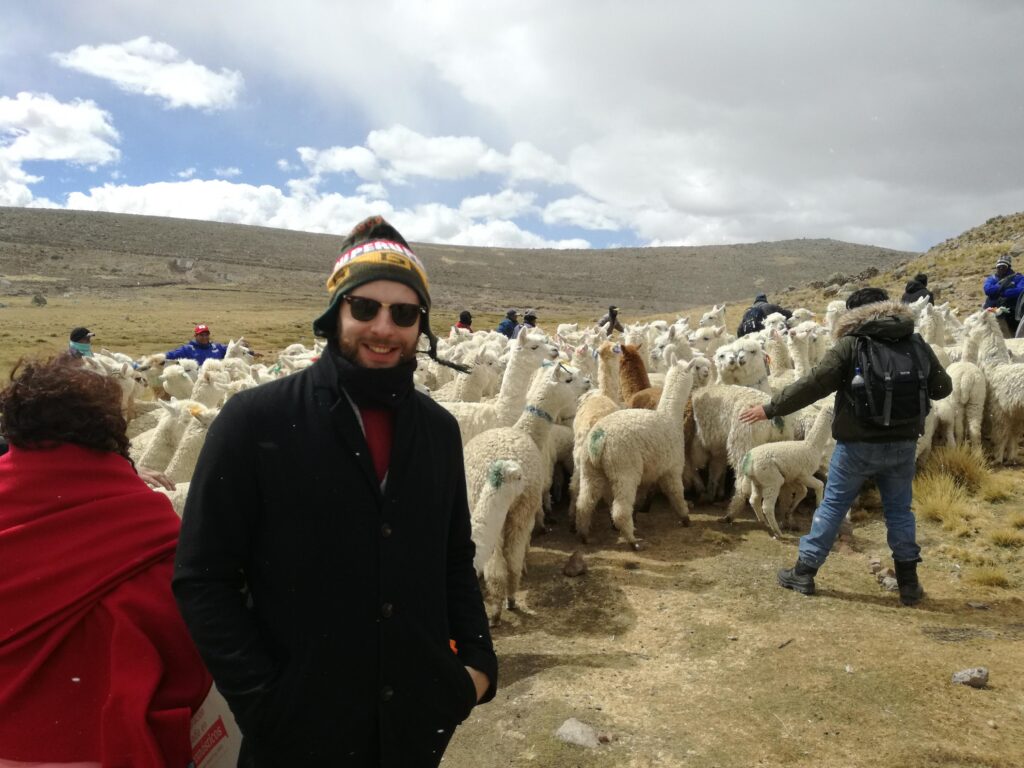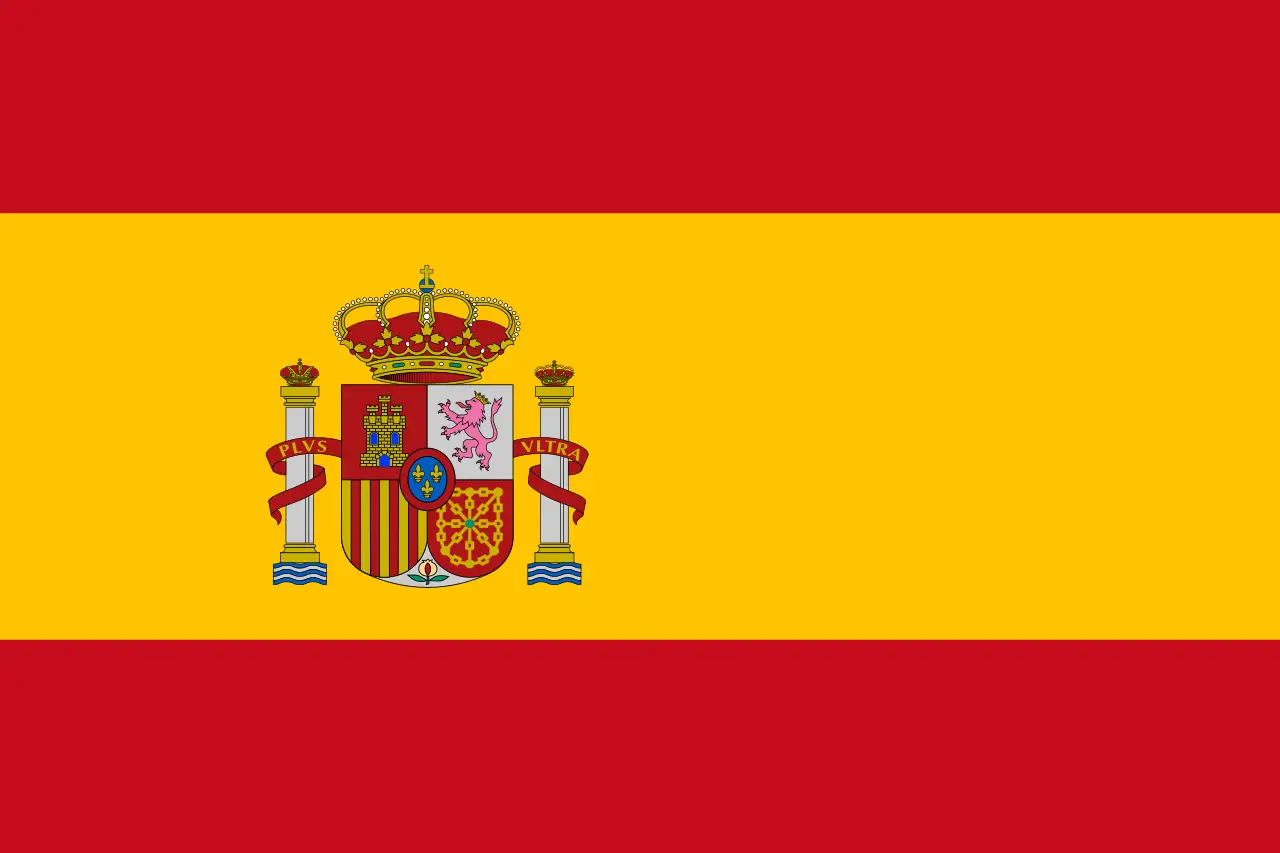
10 Beautiful Book Stores In Barcelona For Book Shopping
As they say, never judge a book by its cover. But you can certainly judge a book store by the way it looks. If you
In 2014, I moved to Barcelona for an Erasmus exchange and decided to pick up Spanish. I always wanted to learn another language, and this was my chance.
Now seven years later, I passed the C2 exam (the final level) and wanted to share my lessons with others for two reasons:
I will share my best way to learn Spanish in this post, hoping it will help you. I emphasized the word ‘my’ because everyone has to figure out their own path and methods.
Before we start with the best way to learn Spanish, I will first explain the levels step by step.

A Common European Framework Reference divides learning a language into six levels: A1, A2, B1, B2, C1, and C2. Most European languages make use of this framework, and it’s an easy way to keep track of your progress. The levels, in short, are:
Now that we have the framework let’s move to your WHY. Your WHY or your reasons to embark on this journey are the most critical thing. Do you want an A1 level for a 2-week holiday, or are you looking to have basic conversations with your peers during your exchange? And do you plan to speak Spanish years after this experience?
It’s easy to lose track of a language, and getting clarity on your WHY will help with this.

I once read (I think in Benny Lewis’ book ‘Fluent in 3 Months‘) that there are five reasons to learn a language, namely:
The idea is that if you don’t meet at least four out of these five criteria, you won’t be able to follow through in the long run. You don’t need to meet these criteria if you want the basics for a 2-week holiday to Spain. However, if you’re serious about learning a language, you need to get serious about your motivation.
The statement above is not a scientific one. You’re thus happily invited to challenge this assumption, but in my experience, there’s undoubtedly some truth to it.
I’ve personally had periods where many of these factors were in place (work, a Spanish-speaking girlfriend, living in Spain/Ecuador, frequently speaking with friends). At other times, however, I was in the Netherlands, not dating anyone, not working in Spanish, and the only things left were my Spanish classes and sporadic phone calls with Spanish friends. I didn’t advance much during these times, and it was hard to stay motivated.
My advice would therefore be to use this knowledge to your advantage. You can’t influence everything, but you should certainly be able to meet new Spanish-speaking friends, go on holidays to Spanish-speaking countries if you have the means, or find work-related opportunities. If this is difficult, be creative. Meet people online or through events related to your target language.
I guarantee you that these motivations will help you improve your language as motivation and skill reinforce each other. The more you speak Spanish, the easier you make friends. And the more Spanish-speaking friends you have, the more motivated you are to improve your language skills.
Your WHY may fluctuate, strengthening and weakening throughout the process. Therefore, my advice would be to come back to it once in a while.
Now that you know the basic levels and have your WHY figured out let’s go through the levels one by one. I’ll share my personal story per level, followed by some practical tips and tools.
We’ll start in 2014.
I always wanted to learn a 3rd language but prioritized other subjects. During my bachelor’s, I got accepted into an Erasmus program. This opportunity changed things.
Although I’d always loved Italian, Spanish was arguably more useful. To not entirely write off Italian just yet, I decided to let faith decide. I submitted my application for Barcelona, Madrid, and Rome. In that order. Faith decided I was going to Barcelona.

Story: It’s the summer of 2014. In September, I will move to Barcelona and some of my friends will go to Madrid. We decide to take a language course at University to prepare for our exchange. During the final months of the academic year, we spent 2.5 hours per week year taking group classes. We had a terrific Mexican teacher who taught the basics and gave us a fact sheet with all the key info. Because my exchange was approaching, motivation wasn’t an issue.
Focus: In this phase of learning a language, you don’t know anything. It thus makes the most sense to join group classes. Learning together is often much more fun. Private lessons make more sense if there’s a vast difference in language levels or if you have a specific goal that varies from your peers. At this stage, that’s not likely. If you’re keen on going beyond the first (A1) level, you have to realize that you’re now laying the fundament for the rest of your life.
Focus, first of all, on your pronunciation. Keep asking and paying attention to how you pronounce words because if you get this wrong at this stage, you will probably keep doing it wrong. Also, be aware that different countries and regions speak with different accents. Ask your teacher how they pronounce it in your target country.
Get the basics right. You will need to learn the numbers, verbs, colors, and some basic conversations. These are key and will come back at all times. At the same time, your goal is not (only) to pass the exam but to reach your language goals. Feel free to skip some words if you think they’re too specific. I remember finding the words ‘grandchild, ‘brother in law,’ and ‘mother in law’ not that useful at this stage.
In English, approximately 3,000 words make up 95% of spoken conversation. You don’t need to know everything. Instead, focus on the keywords and master those.
Takeaways:

Story: The semester is over, and the summer has started. In August I will move to the beautiful Barcelona. Instead of finding a house beforehand, I decide to challenge myself a little. I book a hostel for a week and start searching for a room from there. It turns out calling is faster in Barcelona, so I directly have a chance to practice. I call several real estate agents and eventually found a house in Barrio Gótico. My semester starts, and one of my courses is Spanish A2. I get credits for this, which is a huge bonus.
This time, we received another syllabus, including more grammar and the past tense. I realize A2 is a lot harder than A1. The level is less defined, and the assignments are more challenging. I had to read a book, give a presentation about NGOs, and talk about various random topics. It’s a great way to learn new vocabulary, but you have to embrace the struggle.
Focus: At this stage, you should’ve mastered the basics. Knowing the essentials makes it the perfect time for a language buddy. A language buddy is someone to practice the language with. Ideally, someone who would like to learn one of the languages you speak. I signed up for an official program and found an informal buddy. I was now practicing two hours a week with these two language buddies. The concept is to set a timer for 30 minutes and talk about anything. It helps if you get along well with the other person because it’ll be easier to find common conversation topics. Bring a notepad and pen and write down new words you learn.
Benny Lewis (a famous polyglot) recommends getting a buddy from the start. If you don’t do that or don’t feel comfortable yet, you have to get over this barrier at A2. Your goal is to speak the language. So start speaking. It’s also a great motivator because you see progress and practice.
At this stage, it’s also good to start watching movies and series in your target language. I’d recommend leaving the film in the original language (not dubbed) but putting the subs in your own. That’ll make it slightly easier to understand and pick up words.
Takeaways:
If you’re looking for movie tips, check out the best cultural recommendations per country. You might also like these top 3 Colombian movies, Mexican Music, and the best Argentinian movies of all time.

Story: Unfortunately, my exchange has ended, and I move back to the Netherlands. Because I want to continue practicing, I sign up for a B1 speaking course. The students’ language levels differ, and I don’t find the class that useful. I guess it’s part of the struggle.
After that course, which took more energy than it gave, I moved to a private school called La Española. If you want to learn Spanish and live in Rotterdam, check them out. It’s a great school with phenomenal teachers!!
At the same time, I was doing my Master’s in Econometrics at the Erasmus University. I finished all of my courses, spent one month in Germany, and then returned to Spain for three more. After the month in Germany, where I was primarily working through a challenging grammar book, I spent two months in a trailer close to Prado del Rey. It is a small town in the South of Spain (Andalucia) and I was staying with my parents’ friends. They had a beautiful house surrounded by trees, quietness, five dogs, two horses, and two donkeys.
I took classes at yet another lovely school called Academia Pradoventura. I hung out in the village, spoke to old Spanish ladies in the cafes (which was a challenge with the Andalucian accent), and joined a basketball team. One day, I found out that one of the guys his father owned a winery. They invited me along, and we spent the whole night drinking wine and speaking Spanish. I have to admit, at times, I felt a bit lost. I couldn’t follow the entire conversation. However, simultaneously I felt thrilled that I was actually ‘blending in.’
Focus: If you haven’t booked a short trip to your target country, right now would be a good time to do so (if you have the resources, of course). Although you’re probably struggling quite a bit, remember that you’re making progress. At this stage, you should be able to have all kinds of slightly more advanced conversations. At this stage, it’s good to assess what you’d like your focus to be. Is it grammar? Do you want to speak more?
If you enjoy your group classes, you can continue this way. However, private lessons might be more suited if you have more specific goals. And most importantly, keep it fun. Watch movies (try them with Spanish subs), practice, and keep going!
Takeaways:

Story: In April 2017, I left for Ecuador. My girlfriend at the time was from Quito, and it was my first time visiting her home country. Luckily, the Red Cross wanted me to collect some data for a project. This assignment allowed me to meet Ecuadorians in my line of work.
I had meetings with the UN, Bureau of Statistics, the Red Cross, and several consultants. I still remember the first time I had a call with the UN in preparation for the trip. With some help from google translate, I sent an email in Spanish. I hoped to do the call in English, but the UN officer directly started in his native tongue. I didn’t want to turn the camera on because my face was already turning red. The connection was also not great, so I only heard 50% of what he said. In addition, I didn’t understand everything, so I ended up saying vale (which means OK) quite a bit. After the call, however, I felt great. I had surpassed another milestone. I had worked in Spanish for the first time, giving me the confidence for future meetings.
There’s a quote I once read that stuck with me. It said: “What is the difference between being brave and a coward? There is no difference. The only distinction is whether you move forward despite your fears.” This saying has proved itself on many occasions. Whenever you hit a new milestone, it’s normal to feel anxious. However, after performing this new task several times, you realize that this is now your current level.
Aside from work, I spent 4 hours every morning taking C1 group classes at Universidad Cátolica in Quito. Grammar-wise, I wasn’t on C1, but the speaking went quite well, so they decided I could skip the B2 class. I learned a lot from the classes but even more through interacting with people outside of class.
Focus: If you’re here, you’re doing great! Not many people have the motivation to continue for this long. You’ll likely enjoy speaking Spanish much more because of your improved abilities. To take your skills to a new level, you’ll probably have to live abroad for some time. It’s challenging to get a C1 (or C2) level without spending time in another country. Think about volunteering, Workaway, or school/university exchanges.
You covered most of the grammar at this stage. The subjunctive doesn’t have to be perfect yet, but you should master the rest. Just keep going and reflect on what you’d like to improve. There’s no need to do everything at the same time.
Takeaways:

Story: In July, I handed in my master thesis and graduated from University. I was about to start a new adventure. My girlfriend at the time was living in Ecuador, and I decided to follow her there. I was able to strike a deal with the Red Cross to work on a project basis. This meant either finding a project in South America or providing some tech support and being sent to countries to provide aid after national disasters.
Because my work was irregular and I didn’t know anyone, I spent most of the days having coffees or beers with quasi-random people. I was meeting friends, friends of friends, and friends of friends of friends. It took a lot of energy, but I gradually formed a group of people to hang out with.
Finding a designated project took a bit longer. I wanted to work in South America and had declined work in Nigeria and Bangladesh. Thankfully towards the end of the year, an opportunity came up. The local Red Cross was looking for a Netherlands Red Cross member based in Latin America. It turns out I was the perfect match (because I was already there).
This is when Spanish really became fun. I had weekly dinner and drinks with my colleagues. I worked in Spanish most of the time, spent a month in Lima, and presented during a regional conference.
During this period, I took private classes at a school in Quito. They taught professionals, so I felt it was the right place to improve my business Spanish.
Ever since I started studying Spanish, I wanted to get a C1 certificate. At the end of my stay, I finally did it! I received a C1 certificate. Strangely enough, despite the hard work, I didn’t feel I fully earned it. The reason was that I did not have to pass an official exam to get the certificate. I kept yearning for more.
Focus: We’re really talking now. For most companies, C1 is all you’ll ever need to achieve. C1 means you’re fluent and will be able to use Spanish professionally. It doesn’t hurt to get a certificate if you are at this level. It might help you with future job opportunities.
As I mentioned before, it’s good to spend some time abroad for this level. Otherwise, it will be much more difficult to reach fluency.
One remark I want to make is that I barely read in Spanish because I found it challenging. I got my C1 certificate nonetheless, so don’t beat yourself up if you don’t master each area.
Takeaways:

Story: In November 2021, I took the C2 exam, and in February 2022 Cervantes told me I passed it. I didn’t take a proper picture, so decided to swap it for my graduation picture.
I’m not done though. I would like to read more and eventually have the same level in Spanish and English. Learning a language is like going to the gym. You don’t go to the gym for 6 months and stay fit for the rest of your life.
Although I’ve had ups and downs during this journey, I’ve generally really enjoyed it. Don’t get me wrong, in 2020 I had lost my motivation. I could not travel because of covid and didn’t have any use for it.
A while later, however, I got a housemate from Basque Country, a colleague from Costa Rica, and work opportunities in South America. This sparked my motivation and it felt meant to go this way.
I was initially considering doing the Cervantes C1 exam. As I already had a certificate from a good school and didn’t need it, I decided to go for C2. It would be more challenging, but challenging myself to get better was the end goal.
A C2 exam is focused on academics, science, and politics and thus requires a different use. I, therefore, took private classes at La Española again.
Focus: At this stage, my advice would be to focus solely on passing the exam. Besides studying Spanish, you need to study the exam structure. Moreover, C2 covers mostly academic topics and it’s important to become familiar with those.
Note that you will likely not need C2 for your job. If you are not intrinsically motivated or want to teach Spanish, there’s no need to go this far. If you are, achieving it is very satisfying!
Takeaways:
Although I write about languages here, this blog is about sharing culture in general.
As part of that, I send a bi-weekly music, movie, and book recommendation from countries around the world.
Are you interested in more suggestions from Spanish and non-Spanish-speaking countries?
Sign up for the newsletter below!
Do you want global book, music, and movie recommendations straight to your inbox?
Sign up for the newsletter below!

As they say, never judge a book by its cover. But you can certainly judge a book store by the way it looks. If you

When I moved to Barcelona for my Erasmus exchange, someone gave me a handwritten list with recommendations. She was doing her Master’s degree in Barcelona

